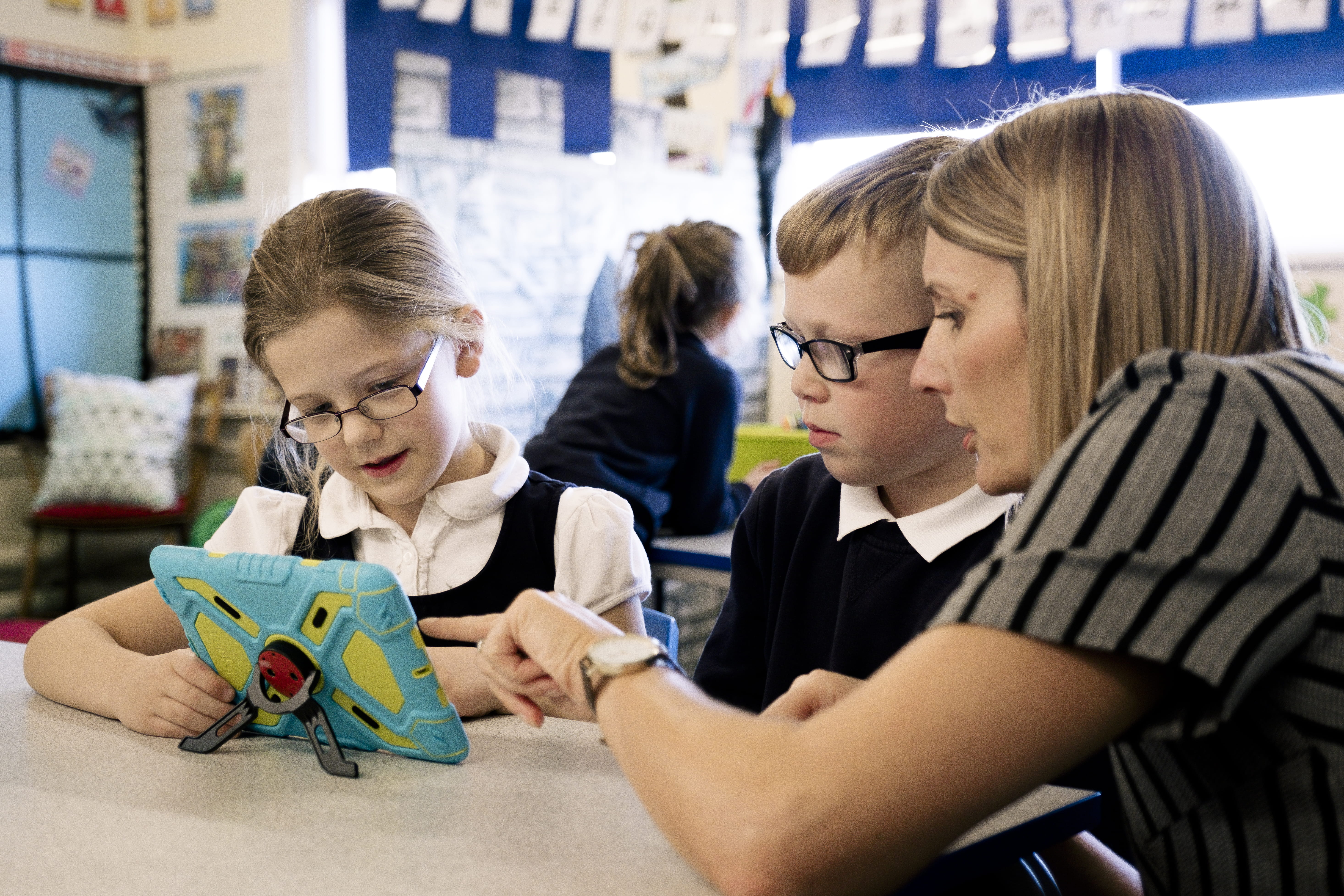More and more educators are trading “sage on the stage” teaching practices for fluid, individualized active learning strategies. Studies show that putting students in charge of their learning creates better outcomes. Although doing so may feel overwhelming at first, it can quickly become second nature with just a few simple steps.
Active learning is about taking a step back and accepting that you don't have to know everything and that your students can teach you and each other,
says Kacie Germadnik, a former gifted and talented teacher and current community engagement manager at SMART. As teachers, it’s important to realize that technology has changed how students take in and share information. It’s important that our teaching evolves with these changes, empowering students to play a more active role in their learning.
Many educators and administrators are eager to embrace active learning strategies but are unsure how to begin. Germadnik highlights the three most common challenges she hears and offers advice for tackling them.
1. Setting boundaries for students
Active learning requires teachers to give students a higher level of control in the learning and grading processes than usual.
Active learning does not mean things turn into a free for all. Traditional practices also have their place,
Germadnik says. The goal is to think about taking the things we know make up good teaching and to make sure we're giving students ample opportunity to combine their interests with learning. It’s also essential to give learners the power to set goals and self-assess to showcase their understanding.
Giving students the freedom to explore does not have to create total chaos. Teachers are encouraged to set rules, boundaries, and expectations so students can engage in active learning with guidance and a safety net.
2. Tackling behavior issues
Some educators and administrators worry student behavior issues will increase as a result of greater flexibility in the classroom. Setting expectations at the start of any lesson allows students to understand the process and gives them boundaries to stay within. At the same time, students are encouraged to take risks in the exploration process.
Studies show classroom behavior can improve when teachers use active learning strategies.
This is because students have choice and voice over what and how they are learning,
Germadnik says. When they feel like they are active participants and their ideas are valued, they are better motivated to stay on task.
3. Starting from square one
Because active learning is fluid and individualized, finding ways to implement it in the classroom can be intimidating. Plus, there is a misconception that embracing active learning strategies is time-consuming and that teachers must recreate the lesson for each student in the class.
Education technology is a major part of the solution. It provides access to resources and activities that let educators create individualized lessons. Technology can ease the burden on teachers by giving students the tools to take their learning in a direction that aligns with their interests as they work toward the learning goal.
Active learning puts more ownership on the student and less on the teacher,
Germadnik says. There is power in a blank page. Give students blank pages and let them work with their peers to showcase their understanding. This will lead to deepened learning and more creative problem-solving.
Bringing technology into active learning lessons also creates a supportive space for the more reluctant students to find their voice. Speaking up can be intimidating, but the ability to share virtually gives students time to think, organize their thoughts, and share when ready.
Whether they love to write, podcast, make videos, code, create comics, or something else, there is a wide range of tools available so students can be true creators,
Germadnik says. They don’t just have to follow a recipe, leading to more engagement and creativity by the students.
Ready to learn more about how to incorporate active learning strategies into your classroom? Visit our blog or check out Lumio’s library of activities and resources focused on active learning.


